Welcome to this installment of “How to Play” on Driving Range Heroes. In this series, we discuss fun/popular games that you can play on the course with your buddies, whether it be for an extra layer of competition, or a small (or large) amount of cash. We will provide a little bit of background on the game, the rules, how the money works (if you’re the gambling type), and add-ons to add some extra fun to the formats. The photos will give examples of how I like to use the scorecard to keep track of everything, but feel free to use your own method! First up, we have the ever-popular Nassau game!
The Rules
The Nassau format is named for its place of origin on Long Island, New York: Nassau Country Club. The setup is very simple. It divides an 18-hole round into three separate matches. The round is split into a front-9 game, a back-9 game, and an 18-hole game.
The game is typically played in a “match play” format, where the lowest score on the hole wins a point. If a hole is tied, it is counted as a “push” and no points are awarded. The allure behind this is that even if you have a terrible 9-hole stretch, you can still make up money/ground on the other 9, as the points scoring resets at the turn for the back 9 (except for the full 18-hole scoring).
A winner is determined for the front 9, back 9, and full 18 round games. Just make sure you keep score separately for all three games to prevent confusion! In the photo above, I use two lines to keep a normal score, and a separate two lines for the Nassau. On the back 9, I split the boxes to show a back 9 only score and keep the overall score going too!
The Money
Before the round starts, a dollar value is determined for each game. Typically, a group would say “let’s play a $20 Nassau,” meaning that the front 9 is worth $20, the back 9 is worth another $20, and the full round game is worth a final $20. This means the most a players wins/loses would be $60. If the 9s are split between the two players, one person would just win $20 for whoever won the full 18 hole match. Of course, you can make each game worth which ever amount you’d like, however, typically the same amount is set for each of the three games.
Handicapping
Using handicaps allows for players of two different skill levels to compete on a level playing field. In a Nassau, the higher handicap of the two players is given a stroke on selected holes (similar to any game using handicaps). To do this, take the difference of the two players’ handicaps, and subtract them. Whatever that number is, the higher handicap player gets a stroke on that numbered handicap hole according to the course handicap rankings. Most people use dots or circle the hole numbers on the scorecard to denote which holes the player gets the strokes on, like the picture above.
I know that sounds confusing so let’s make this simple. Player A is an eight handicap and Player B is a fourteen. Fourteen minus eight is six, so Player B would get an extra stroke on the six hardest ranked holes on the course based on the handicap rankings on the scorecard. Any hole where a player is getting a one-stroke advantage is referred to as “stroking” on that hole. Therefore if Player B is getting a stroke and both players make a par, Player B actually wins the point.
Adding on to the Fun!
One element that adds to the fun of a Nassau is the option to “press.” A press essentially restarts the scoring of either the front or back 9, or the full 18, for double the original bet. To initiate a press, a player must be down by a minimum of 2 points (or 2 holes) in the match. Again, this is easier explained through example than through an explanation so here it goes:
Let’s say Player A and Player B are playing a $20 Nassau. Player A is beating Player B by three points through six holes. Player B has the option to press the front 9, and does so. This means that the original bet is still in place, and now another $20 bet is placed for holes 7 through 9. Now, the front 9 match is still worth $20, and a new match of the final three holes of the front 9 are for another $20. The total wagering for the round has now gone from $60 total, to $80.
In these situations, a press can be made for the front 9, back 9, or whole 18 hole match. Note that the person winning the match has the right to reject a press.
Summary
The Nassau is a great game that can be played by any group of golfers, as long as a dollar amount and handicapping are setup prior to teeing off. I’m big on match play setups versus stroke play, since you can have a blowup hole (which I am prone to) without blowing the entire match. The Nassau is also great because you if you have a bad front 9 to warm up, you can still win money by playing well on the back 9. Make sure you’re always betting relatively within your means, and above all, have fun!

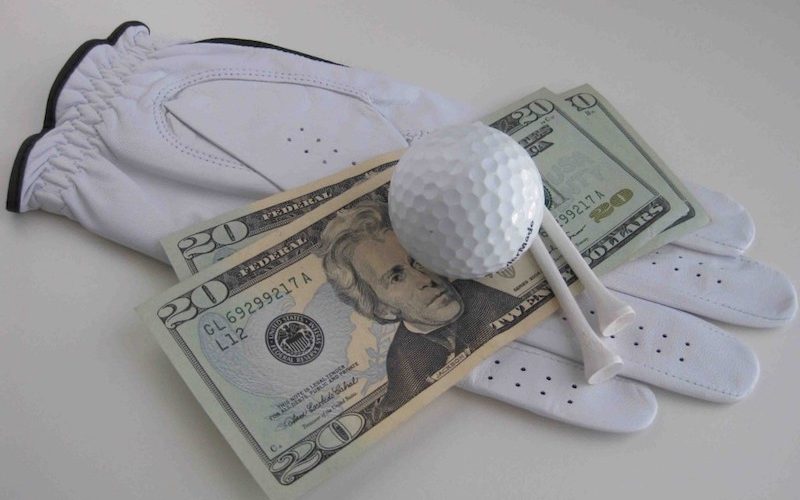

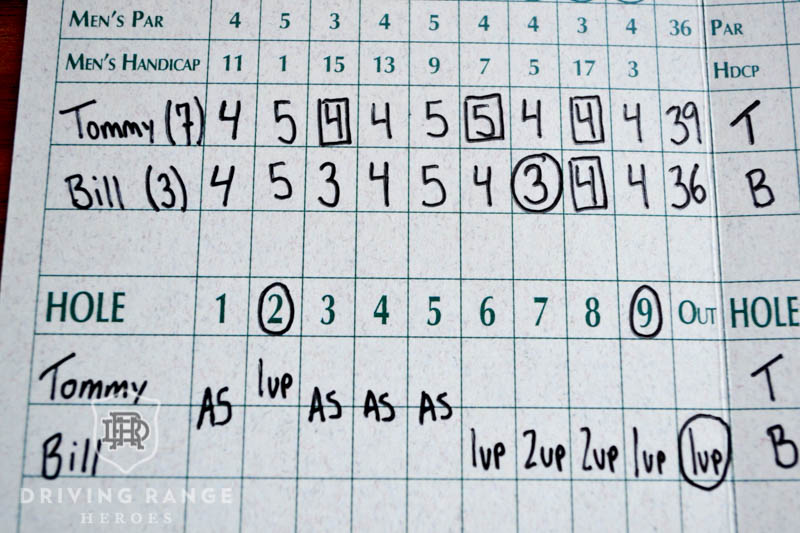
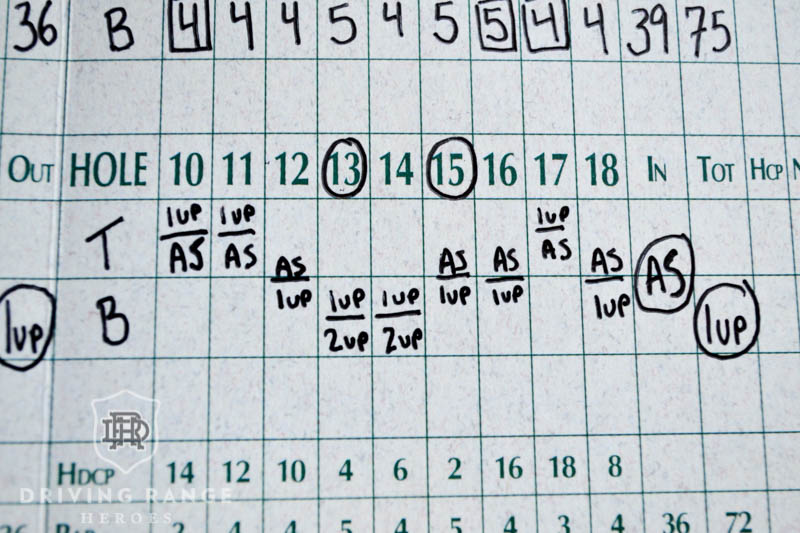
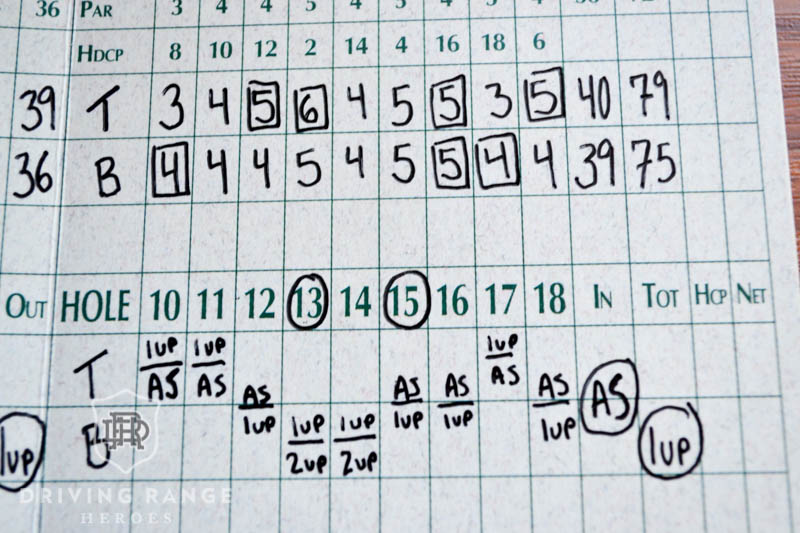














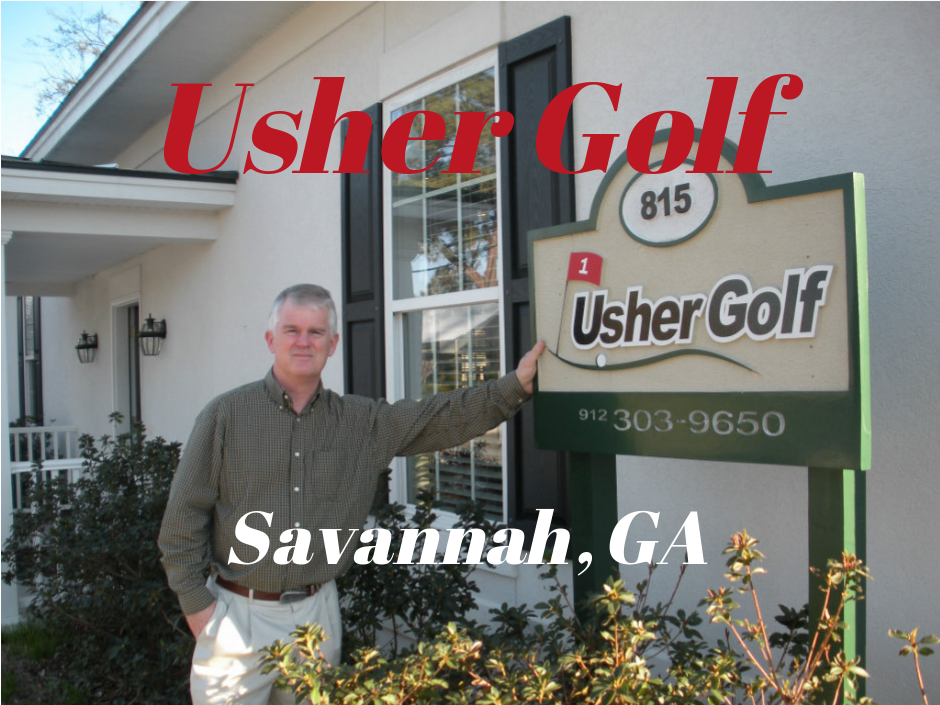
Hello Tommy
My question is how do you handle when you are playing 4 man Nassau and 2 players with lower handicapps are playing higher handicapps
For example
Player a has a 9 handicapp
Player b has a 16
They are playing
Player c handicapp 22
Player d handicapp 25
How do we calculate the strokes?
Thanks
Hey Ron –
Great question. In this scenario, you can use the GHIN App (or other similar apps that calculate handicap) to find out each players Course Handicap for the course you are playing. It’s a calculation based off of your handicap index, the slope of the course, and the rating.
In your example let’s say player A has a course handicap of 11, B of 17, C and 24 and D at 27. You would then set the lowest of the group, in this case player A, to be the player getting no strokes, or playing off of a 0. You then calculate the difference of course handicaps to see how many holes each player gets strokes on.
Back to your example, if player A is now the zero, B would get 6 stroke holes (17 minus 11), C gets 13 and D gets 16. You then assign those strokes to the hardest holes based on the hole handicap. Player B gets a stroke on handicap holes 1-6, C on 1-13 and so on.
So on the number 1 handicap hole, if it’s a par 4, player A plays it as a par 4, players B, C and D all play it as a par 5 because they’re getting a stroke, which is commonly referred to as a “pop hole”. Then you just calculate the match play result accordingly. In some extreme instances a player may get two strokes if the course handicaps differ by more than 18 between players.
I hope this makes sense. Feel free to follow up with any additional questions.
Thanks for stopping in!
Tommy
Hi Tommy –
Do you allow a press after a match is closed, e.g., I lose the front nine after 6 (4 with 3) but want to press on hole nine?
Thanks –
Good question Howie!
In that case you would have to press the front match before it concludes. Rules vary based on who you play with. Sometimes people implement an auto press every time a team goes 2-down. However, in your situation, you wouldn’t be able to lose on hole 6, then press the front 9 on hole 9.
What you could do is press the all day bet at that point, but not the front.
Thanks for stopping in!
Tommy